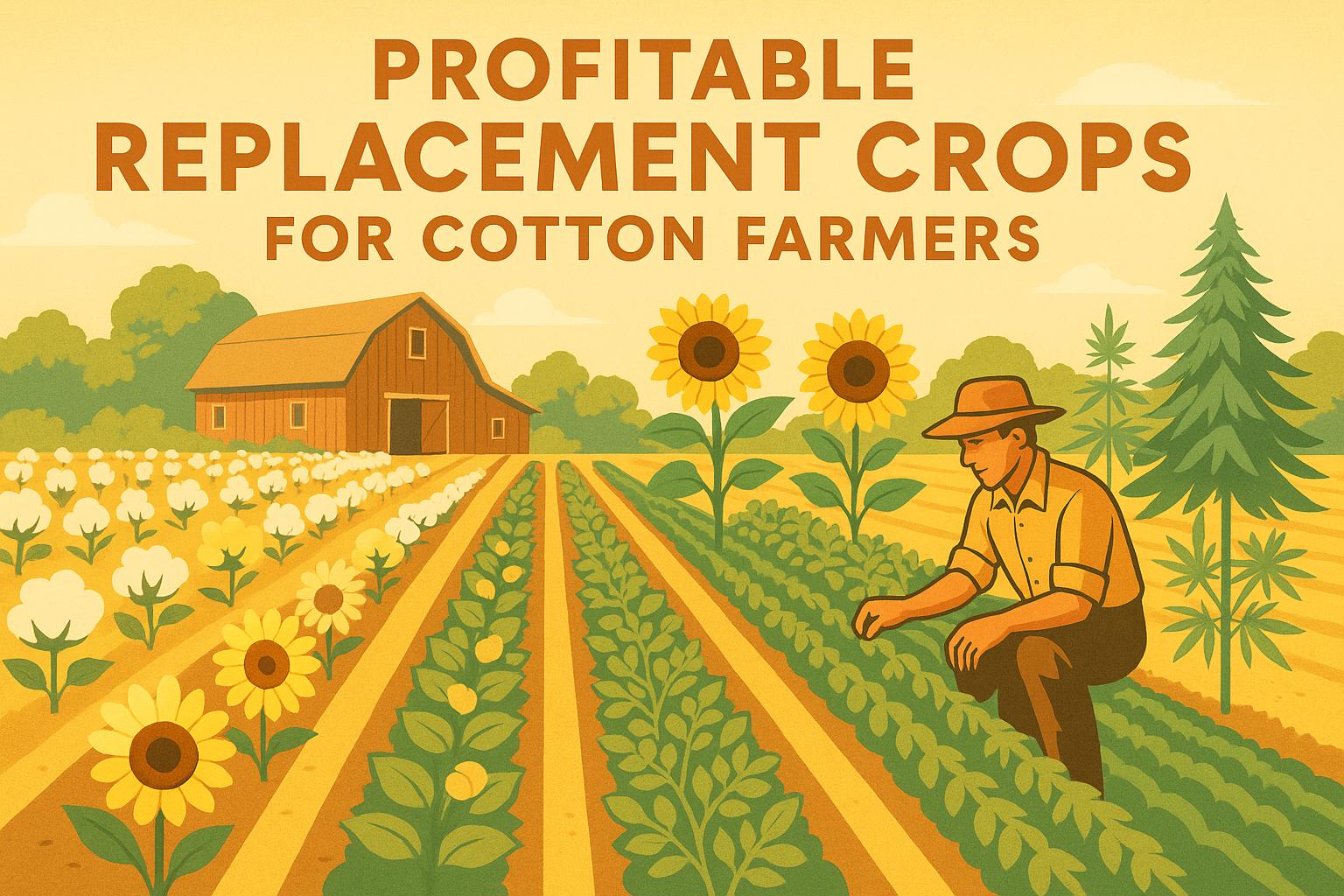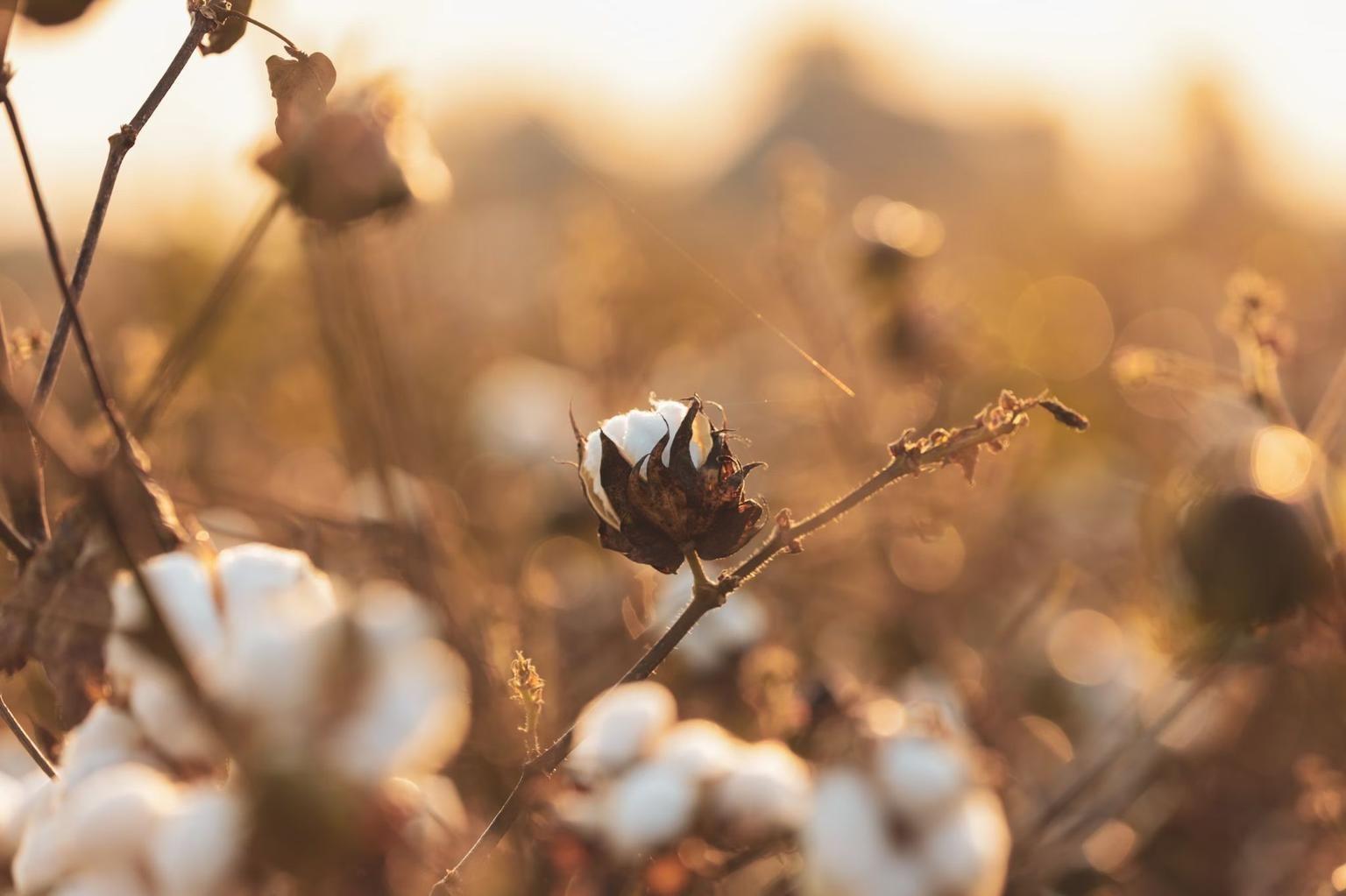Cotton gin byproducts, like burrs, motes, and plant residues, are more than just waste - they’re valuable resources. These materials can improve soil, create natural fertilizers, generate renewable energy, provide farm animal bedding, and even be used in construction and manufacturing. Here’s a quick breakdown:
- Soil Improvement: Boosts soil health, water retention, and carbon storage.
- Natural Fertilizer: Compost cotton gin waste for nutrient-rich, organic fertilizer.
- Energy Generation: Convert byproducts into biomass pellets, biofuel, or syngas.
- Animal Bedding: Absorbent and insulating bedding for livestock.
- Construction Materials: Used in insulation, concrete reinforcement, and composite boards.
These uses reduce waste, support eco-friendly practices, and open new opportunities for farmers and industries. Keep reading to learn how these byproducts are transforming agriculture and beyond.
"Unlocking" a New Composting Ingredient - Cotton Gin Waste
1. Soil Improvement and Carbon Storage
Byproducts from cotton gins can significantly improve soil quality while helping store carbon. Packed with organic matter, these byproducts enhance soil structure, increase water retention, support microbial life, and make nutrients more accessible. This not only benefits agricultural productivity but also helps lower carbon emissions.
As these materials break down, they slowly release nutrients, promoting lasting soil fertility and supporting ecosystem balance. Farmers should tailor their application to meet the specific needs of their local soil conditions.
2. Making Natural Fertilizer
Turning cotton gin waste - like leaves, stems, and plant residues - into compost creates an organic fertilizer that supports crop growth while cutting down on synthetic inputs.
Here’s how it’s done: Combine cotton gin waste with nitrogen-rich materials, keep the moisture and temperature levels balanced, and turn the mixture regularly. Over time, this process transforms the waste into a rich, dark compost packed with nitrogen, phosphorus, potassium, and organic matter.
Using this compost comes with a range of benefits:
- Nutrients are released slowly, supporting plants throughout the growing season.
- Soil structure improves, helping it retain water more effectively.
- Microbial activity in the soil increases, promoting healthier crops.
Farmers who use compost from cotton gin byproducts often notice healthier soil and better crop yields.
sbb-itb-0e617ca
3. Fuel and Power Generation
Cotton gin byproducts can be turned into energy sources, offering a renewable way to generate power. Here are three ways to convert this waste into energy:
- Biomass Pellets: Cotton gin waste can be dried, ground, and compressed into pellets. These pellets are an efficient fuel source for industrial boilers and power plants.
- Direct Combustion: Waste can also be burned directly in biomass furnaces to produce energy, creating a self-sufficient energy system.
- Gasification: This process transforms the waste into syngas, which can either fuel generators or be refined into liquid biofuel.
These methods not only reduce landfill use and greenhouse gas emissions but also provide an alternative energy source. To implement these solutions, consider factors like the amount of waste, energy requirements, processing capacity, and equipment costs. By doing so, you can lower operating costs and make better use of byproducts while contributing to environmentally friendly practices.
4. Farm Animal Care Products
Cotton gin byproducts are a practical choice for farm animal bedding, thanks to their strong moisture absorption and insulating properties. These qualities help keep livestock comfortable while supporting eco-friendly farming efforts.
Various animals, such as dairy cattle, horses, poultry, and sheep, benefit from this type of bedding. For example, dairy cattle experience less pressure, which helps maintain udder health. Horses get added cushioning for their hooves and joints. Poultry enjoy better nesting insulation, and sheep benefit from more stable housing temperatures.
Using these byproducts not only reduces agricultural waste but also promotes responsible farming practices. With regular cleaning to maintain hygiene, the spent bedding can be composted due to its biodegradable nature, creating a sustainable farming cycle. This approach highlights the practical uses of cotton gin byproducts in agriculture.
5. Construction and Manufacturing Uses
Cotton gin byproducts are finding practical applications in construction and manufacturing, offering resource-efficient solutions for various needs.
For construction, cotton gin waste is repurposed into insulation materials, providing an eco-friendly option for wall cavities and attics. Additionally, when used as a fiber additive in concrete, it can improve the material's strength and durability, making it suitable for foundations and other structural components.
In manufacturing, these byproducts are used to produce composite boards like particleboard and MDF. These materials are popular in crafting furniture and cabinetry, offering a reliable and sustainable alternative to traditional wood-based products.
| Application | Description | Common Uses |
|---|---|---|
| Building Insulation | Insulation made from cotton byproducts | Wall cavities, attics |
| Composite Boards (MDF) | Alternative to traditional wood products | Furniture, cabinetry |
| Concrete Reinforcement | Fiber additive for stronger concrete | Foundations, structural parts |
These uses highlight how cotton gin byproducts contribute to more sustainable practices in construction and manufacturing industries.
Conclusion
Byproducts from cotton gins are finding new uses in agriculture, energy, and construction. Turning these materials into useful resources helps cut down on waste while offering practical alternatives across various fields.
These uses not only tackle environmental issues but also provide economic benefits. Farmers and gin operators can tap into new income opportunities through uses like improving soil, generating energy, and creating construction materials - all while contributing to conservation efforts.
For more details on U.S. cotton gins adopting these practices, visit cottongins.org. The site features a detailed directory and updates on industry developments. The cotton industry’s progress in repurposing waste shows how agriculture can support both environmental care and economic growth.


